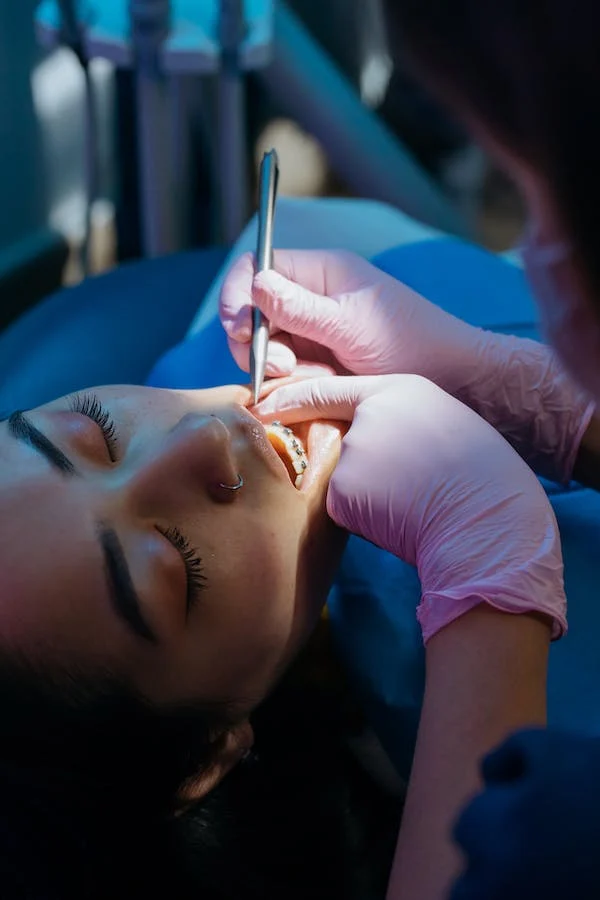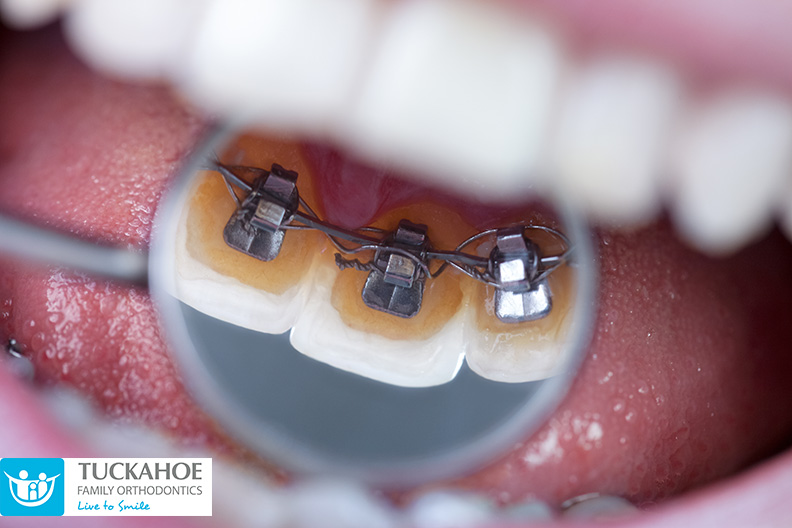Legacy Orthodontics - Questions
Legacy Orthodontics - Questions
Blog Article
All About Legacy Orthodontics
Table of ContentsExamine This Report on Legacy OrthodonticsRumored Buzz on Legacy OrthodonticsAn Unbiased View of Legacy OrthodonticsLegacy Orthodontics for DummiesIndicators on Legacy Orthodontics You Should Know
At Advanced Orthodontics, we supply patients with a alternative treatment experience. Furthermore, we provide adjustable treatment routines, flexible settlement options and an enjoyable, delightful experience. braces. Call ( 480) 357-4900 today to learn more and timetable an appointment.An orthodontist is a dental practitioner trained to detect, protect against, and deal with teeth and jaw irregularities. Orthodontists work with people of all ages, from youngsters to grownups.
Malocclusion, or misaligned teeth, can lead to oral issues, including dental caries, gum disease, and hard or painful eating. Not everyone is born with straight teeth. If you have a negative bite or large areas between your teeth, you might want to get in touch with a dentist concentrating on orthodontic treatment.
The smart Trick of Legacy Orthodontics That Nobody is Talking About
( Picture Credit Score: DigitalVision/Getty Images) Orthodontists make use of fixed and removable oral tools, like dental braces, retainers, and bands, to alter the position of teeth in your mouth. Orthodontic treatment is for dental irregularities, consisting of: Misaligned teethBite troubles, like an overbite or an underbiteCrowded teeth or teeth that are too far apartJaw misalignmentThe goal of orthodontic treatment is to improve your bite.
A healthy bite ensures you can consume, chew, and speak properly. While you could think about orthodontists as mainly for youngsters or teens that need dental braces, they can deal with oral issues at any kind of age. Orthodontists attend university, oral institution, and orthodontic institution. After graduation, they invest 2 or 3 years in an orthodontic residency program.
, but not all dental practitioners are orthodontists. They concentrate on two areas: Just how to appropriately and safely move teeth Just how to effectively direct development in the teeth, jaw, and faceOnce an orthodontist has actually completed training, they have the choice to come to be board licensed.
The Best Strategy To Use For Legacy Orthodontics
Malocclusion leads to tooth congestion, an askew jaw, or irregular bite patterns. Malocclusion is typically treated with: Your orthodontist attaches metal, ceramic, or plastic square bonds to your teeth.
If you have only minor malocclusion, you may have the ability to use clear braces, called aligners, rather than traditional braces (http://prsync.com/legacy-orthodontics/). Some people need a headgear to aid move teeth into line with stress from outside the mouth. After dental braces or aligners, you'll need to wear a retainer. A retainer is a customized tool that keeps your teeth in position.
They're usually utilized on children. They can create additional room in the mouth without having to draw teeth. If you have a major underbite or overbite, you might need orthognathic surgical procedure (additionally called orthodontic surgical treatment) to extend or shorten your jaw. Orthodontists utilize wires, medical screws, or plates to sustain your jaw bone.
You might require to see an orthodontist if you have: Crowding or not sufficient room for all of your teethOverbite, when your top teeth come your bottom teethUnderbite, when your base teeth are also much forwardSpacing or concerns with gapsCrossbite, which is when your top teeth fit behind your bottom teeth when your mouth is closedOpen bite or an upright space between your front base and upper teethMisplaced midline, when the facility of your bottom and top teeth do not line up Correcting an oral malocclusion can: Make attacking, eating, and talking easierImprove the proportion of our face and your general appearanceEase discomfort from temporomandibular joint disordersSeparate your teeth and make them less complicated to clean up, assisting avoid tooth degeneration or cavities It's commonly a dental practitioner that first notices misaligned teeth during a routine exam.
All About Legacy Orthodontics

During your initial orthodontic consultation, you'll likely have: An oral examPhotos taken of your face and smileDental X-raysPanoramic (360 degree) X-rays of your face and headImpressions to produce molds of your teethThese tests will certainly help your orthodontist understand exactly how to wage your therapy. leesburg clear braces. An orthodontist is a dental expert who's had training to treat your teeth and jaw
Orthodontists may carry out surgery, exams,X-rays,and more to aid you achieve a more comfortable, much healthier smile. An orthodontist is concentrated on your bite, so something like a damaged tooth would certainly be dealt with by a dental expert. Orthodontists are dental professionals but not all dental practitioners are orthodontists. Orthodontists are concentrated on your bite, or the means your teeth meshed, and the straightness of your teeth.
Ever before wondered just how stars always appear to have completely aligned teeth? The response usually hinges on the experienced hands of an orthodontist. What exactly does an orthodontist do? Orthodontists are oral professionals who concentrate on remedying irregularities in the teeth and jaws. Their know-how surpasses simply producing a gorgeous smile; it reaches enhancing your overall oral health and function.
Some Known Facts About Legacy Orthodontics.

, orthodontists have a pop over here diverse toolkit at their disposal. These tried-and-true braces use a system of brackets bound to the teeth and attached by cords.
Clear aligners, like Invisalign, are a preferred alternative for patients looking for an extra discreet therapy choice. These removable trays are customized to gradually move the teeth's position. Headwear may be utilized along with dental braces or aligners to use additional targeted pressures, specifically for fixing jaw inconsistencies. In instances of narrow jaws, palatal expanders can be utilized to produce room for proper tooth positioning.
Report this page